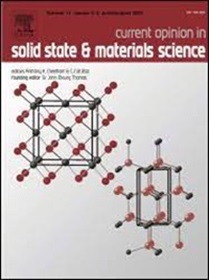机器学习原子间势的实用指南——现状与未来
IF 12.2
2区 材料科学
Q1 MATERIALS SCIENCE, MULTIDISCIPLINARY
Current Opinion in Solid State & Materials Science
Pub Date : 2025-02-26
DOI:10.1016/j.cossms.2025.101214
引用次数: 0
摘要
机器学习原子间势(MLIPs)的快速发展和大量文献使得那些不是专家但希望使用这些工具的研究人员很难知道如何进行。这篇综述的精神是帮助这样的研究人员,作为一个实用的,可访问的指导,在MLIPs的最新技术。这篇综述论文涵盖了与mlip相关的广泛主题,包括(i) mlip如何以及为什么是分子建模中许多令人兴奋的进步的推动者的核心方面,(ii)不同类型mlip的主要基础,包括它们的基本结构和形式,(iii)通用mlip对有机和无机系统的潜在变革影响,包括对最新进展、能力、缺点的概述。以及这类新兴MLIP的潜在应用,(iv)估计和理解MLIP执行速度的实用指南,包括基于硬件可用性,所使用的MLIP类型以及预期的模拟大小和时间的用户指南,(v)用户应该通过考虑硬件资源,速度要求,能量和力精度要求为给定应用选择MLIP的手册;(vi)围绕MLIP基础设施的讨论,包括训练数据来源、预训练电位和用于训练的硬件资源;(vii)总结当前MLIP的一些关键局限性和当前缓解这些局限性的方法,包括远程相互作用、处理磁系统和处理激发态的方法;最后,我们对mlip在未来3-10年的发展和应用进行了一些推测性的思考。本文章由计算机程序翻译,如有差异,请以英文原文为准。
A practical guide to machine learning interatomic potentials – Status and future
The rapid development and large body of literature on machine learning interatomic potentials (MLIPs) can make it difficult to know how to proceed for researchers who are not experts but wish to use these tools. The spirit of this review is to help such researchers by serving as a practical, accessible guide to the state-of-the-art in MLIPs. This review paper covers a broad range of topics related to MLIPs, including (i) central aspects of how and why MLIPs are enablers of many exciting advancements in molecular modeling, (ii) the main underpinnings of different types of MLIPs, including their basic structure and formalism, (iii) the potentially transformative impact of universal MLIPs for both organic and inorganic systems, including an overview of the most recent advances, capabilities, downsides, and potential applications of this nascent class of MLIPs, (iv) a practical guide for estimating and understanding the execution speed of MLIPs, including guidance for users based on hardware availability, type of MLIP used, and prospective simulation size and time, (v) a manual for what MLIP a user should choose for a given application by considering hardware resources, speed requirements, energy and force accuracy requirements, as well as guidance for choosing pre-trained potentials or fitting a new potential from scratch, (vi) discussion around MLIP infrastructure, including sources of training data, pre-trained potentials, and hardware resources for training, (vii) summary of some key limitations of present MLIPs and current approaches to mitigate such limitations, including methods of including long-range interactions, handling magnetic systems, and treatment of excited states, and finally (viii) we finish with some more speculative thoughts on what the future holds for the development and application of MLIPs over the next 3–10+ years.
求助全文
通过发布文献求助,成功后即可免费获取论文全文。
去求助
来源期刊

Current Opinion in Solid State & Materials Science
工程技术-材料科学:综合
CiteScore
21.10
自引率
3.60%
发文量
41
审稿时长
47 days
期刊介绍:
Title: Current Opinion in Solid State & Materials Science
Journal Overview:
Aims to provide a snapshot of the latest research and advances in materials science
Publishes six issues per year, each containing reviews covering exciting and developing areas of materials science
Each issue comprises 2-3 sections of reviews commissioned by international researchers who are experts in their fields
Provides materials scientists with the opportunity to stay informed about current developments in their own and related areas of research
Promotes cross-fertilization of ideas across an increasingly interdisciplinary field
 求助内容:
求助内容: 应助结果提醒方式:
应助结果提醒方式:


